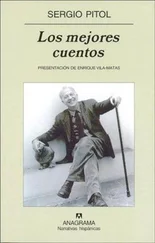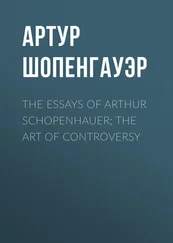ANOTHER DAY, IN 1962
I go to Coyoacán to eat at the home of Vicente and Albo Rojo. José Carlos Becerra has arrived from Cuernavaca and says that he encountered military reserves on the highway. Twice they stopped his car and made him get out; they searched inside the car and the trunk. It wasn’t anything personal, he says; from what he was able to ascertain, they were searching all cars and buses. The newspapers are reporting that in the last few days there have been uprisings in different areas of Morelos and that panic is spreading in Cuernavaca. They accuse an agrarian leader, Rubén Jaramillo, of having taken up arms. The poet Becerra says that the talk of panic is a lie; they’re trying to create panic, perhaps as a pretext to arrest Jaramillo.
Monsiváis arrives during coffee. The get-together takes on a new life. Carlos remarks that the struggle between the solemn and the anti-solemn is beginning to cause tension in certain quarters. Lists are immediately made; everyone contributes names. In some cases, the opinion is unanimous; in others, there are doubts and reservations, nuances are noted. Examples are cited, of intellectuals as well as public figures, solemn in perpetuity, who, so as not to lose their clients, pretend to have loosened up. Luis Prieto comments that in the penultimate ordinary meeting of the association “Friends United for a Culture of Modesty,” several members remarked that they were alarmed by the disappearance of their own presence in their homes as well as at their businesses; their grandchildren, and also their employees, servants, and gardeners were all talking in front of them as if they did not exist — which they attributed to having succumbed to an excess of solemnity. They meet the first Tuesday of each month, Luis adds; the women in one of their homes, and the gentlemen in a room at the Bankers’ Club. Every few months both sexes celebrate a plenary meeting at the country club. Luis had to go as a representative of the attorney De la Cadena, a friend of his grandfather since childhood, who could not attend that day because it was his ninetieth birthday, which he wanted to celebrate with family. He presented a letter that authorized him to vote for de-solemnization provided that it was carried out gradually and judiciously. During that session, they voted unanimously to ask their tailors to dress them in the latest style, not all at once, since that would be unbearable, but little by little, pian piano. The other decision, although it must be noted that it was not unanimous, was to be initiated into modern music because they know it to be the centerpiece of the anti-solemn view. For this session, the banker Don Arturo María Junco, certain of the outcome of the vote, had already contracted a movie projectionist with equipment necessary to show a film: “Modern music, ma non troppo! ” he said. The projectionist chose films by Ginger Rogers and Fred Astaire. When the title appeared on screen: The Gay Divorcee, the uproar was overwhelming. A divorcee! And gay! A gay divorcee? Never! Could it be that they were members of an association called “Friends United for a Culture of Debauchery?!” Fortunately, the man from the theater had another film: Pies de seda.
“ Shall We Dance? ” Monsiváis said immediately in English.
“As the projection progressed,” Luis continued, “something began to move inside the hearts of those watching. When it was over, they asked the projectionist to replay some musical numbers, and in one of them, Don Arturo María stood up and to everyone’s surprise began to do a few discreet tap steps, then spun like a top, waving a lace tablecloth that he had removed from the table, tossing it into the air, and running rhythmically to catch it before it fell. He moved about with remarkable ease, as if during his entire life he had done nothing but dance. A musical number was replayed, and on that occasion four or five others began to tap with him, and although the difference between Don Arturo María and the new enthusiasts was astronomical, the audience’s joy was absolute.”
“But how can you be sure, Luis, that whatshisname had not danced before?” Someone added: “I assure you he’s probably a smooth operator who’s fooled his entire fraternity.”
“He insisted he wasn’t, and I have no reason to disbelieve him,” Luis responds. “Even he seemed to be surprised by his exploits. He was ecstatic. This month I had to go back to the Bankers’ Club because old man De la Cadena overdid it on his birthday and is being insufferable, and this time the meeting was entirely different. Most showed up in shoes appropriate for dancing with disheveled hair, which some had dyed, or so it seemed, and print ties that they would never have dared to wear before voting for modernization. And, you guessed it, to top it all off, they themselves demanded that The Gay Divorcee be shown. ‘Modesty be damned!’ they shouted. At the end, just as before, there was a replay of musical scenes and dancing. Don Arturo María was out of control and unrecognizable. At one point, he turned to his brother-in-law, Rafael de Aguirre, stuck out his hand and said to him: ‘Hey, Fallo, now it’s your turn to be Ginger for a while and I’ll be Fred.’ Don Rafael was horrified. ‘What, you’re going to be Fred?’ he stuttered. ‘That’s right, and you’re Ginger; you understood me perfectly.’ I thought Don Rafael was going to collapse from an embolism, but his brother-in-law calmed him down: ‘Remember, Fallo, in this kind of dance one barely touches the tips of the fingers; or didn’t you notice? Did you watch the movie or did you fall asleep? In these numbers, each person twirls however he wants.’ ‘But what about my beard, Fatso? Won’t it look bad if Ginger has a beard?’ ‘We’ll all pretend that you don’t have one, or that we don’t see it, Fallo,’ his cousin Don Graciano de Aguirre, the dean of the Association, said forcefully. That said, the poor devil began to remove the cilices that were torturing his legs; ‘So I don’t lose my agility,’ he said, and also removed the scapulars because it seemed disrespectful to drag Our Lady of Pilar and above all the Virgin of Guadalupe into those dances. So they began to dance. Everyone else formed a semicircle and made choreographed movements with their arms and legs to enhance the couple’s artistry. When it was over, they decided unanimously to hire a choreographer to teach them how to stage more complex numbers; upon hearing this, the projectionist took a card from his pocket and handed it to the dean. It read: ‘Párvula Dry: Dance Teacher: Flamenco, Conga, Cuchichí, Mambo, and Other Rhythms.’ ‘We’ve entered a new era,’ the dean said. ‘Our Association has taken an historic step. On the one hand, it will improve our circulation, of which we’re in dire need, but also, and most of all, we’ll surprise our wives at October’s plenary session. Can you imagine, gentlemen, the looks on their faces? They’ll be so proud of us. Neither they nor anyone else will be able to brand us as solemn, do you realize? First thing tomorrow, I’ll contact Doña Párvula Dry.’”
Luis’s story is very famous, and it grows richer with each re-telling; characters we all know filter through it. The name Párvula Dry printed on the card becomes increasingly more important until she becomes the story’s protagonist. Upon discovering the size of her pupils’ fortunes, Párvula Dry will take advantage of them, scam them, promise to take them on a triumphant world tour, when in reality the most she will do is book them in Barcelona’s Bodega Bohemia, a Goyaesque dive where old variety singers are heckled and jeered by a ruthless public. Once there, she’ll escort the group, now called “Friends United of the Voluptuous Terpsichore,” in the front door then vanish out the back, only to reappear in Capri, where she’ll buy a sumptuous residence that once belonged to Gloria Swanson; thus beginning a new chapter in her stormy existence. By the end, the story undergoes so many changes that it ends up making no sense, but we all amuse ourselves to death.
Читать дальше












